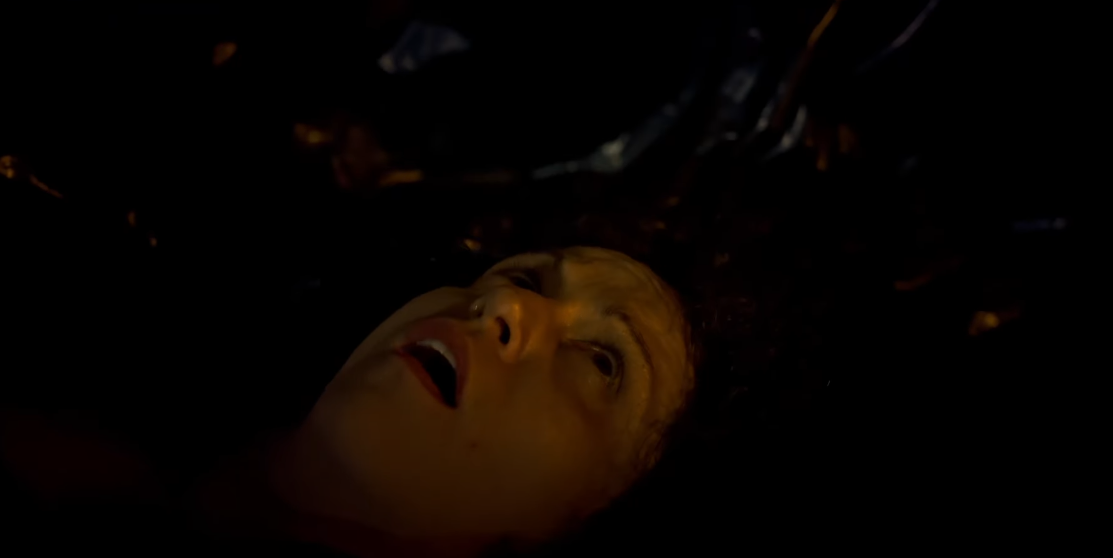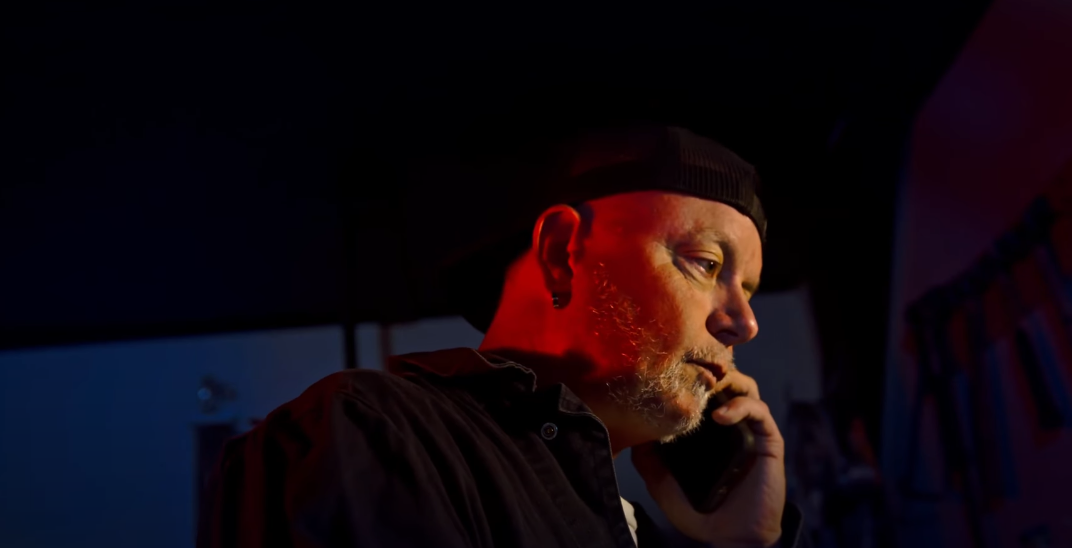In American Psychopath, writer-director Frank Palangi sets out to craft a grim and mysterious suburban nightmare — the story of a young woman who becomes the target of a serial killer, awakening in a hospital with no memory of who she is or what happened. On paper, this premise sounds like a serviceable setup for a micro-budget psychological thriller, something in the vein of Memento meets Halloween. Unfortunately, despite a few flashes of ambition and sincerity, the execution rarely lives up to the concept.
The story follows Kathy (Erica James), a girl from out of town who travels to reconnect with her estranged father, only to find herself lost — and then abducted by a masked stranger. After a harrowing encounter, she wakes up in the hospital suffering from amnesia, haunted by fragmented flashbacks and the realization that the killer is still out there. The film teases a mystery-thriller structure, with a local radio host (played by Palangi himself) and other small-town oddballs caught up in the investigation.
To Palangi’s credit, American Psychopath has the bones of an interesting idea. The notion of memory loss as both a narrative device and psychological metaphor could have given the film depth. There’s also something charming about an independent filmmaker trying to make a homemade horror movie against all odds. You can tell that Palangi loves the genre — the camera lingers on masks, shadows, and backroad Americana with a kind of earnest DIY energy that fans of shot-on-video horror might appreciate.
However, that passion is often undermined by technical and storytelling issues. The editing is jarring, with abrupt cuts and transitions that break immersion. Some scenes feel stitched together mid-conversation, while others linger too long without purpose. The sound design is uneven, and the music, while occasionally atmospheric, doesn’t always match the tone of the scene. There are also glaring continuity errors and misspelled on-screen text that give the impression of a rushed final product.
Performance-wise, the cast struggles to elevate the material. Erica James tries her best as the confused and traumatized Kathy, but her portrayal of amnesia never feels convincing, and the dialogue gives her little to work with. Supporting performances fare worse — lines are often delivered flatly or awkwardly, making it hard to connect with any of the characters.
Visually, American Psychopath resembles a student project more than a feature film. The lighting is inconsistent, and the framing often feels accidental rather than intentional. While there’s an admirable attempt at building atmosphere through low-budget means, the overall aesthetic ends up feeling amateurish rather than gritty or stylized.
Still, it’s worth acknowledging the effort that goes into any independent production. Palangi wears nearly every hat here — writer, director, editor, actor, and more — and that alone speaks to determination, if not restraint. There are hints of potential in his ideas; with more collaboration and polish, his future projects could find a stronger balance between ambition and execution.
In the end, American Psychopath is a film that’s easier to appreciate for its intention than its result. It’s an earnest attempt to tell a dark, psychological story with limited means, but one that ultimately collapses under the weight of inexperience and uneven craftsmanship. Still, for fans of grassroots indie horror — the kind made in basements, backyards, and small-town streets — it might offer a certain nostalgic charm, even if unintentionally.
Jessie Hobson



